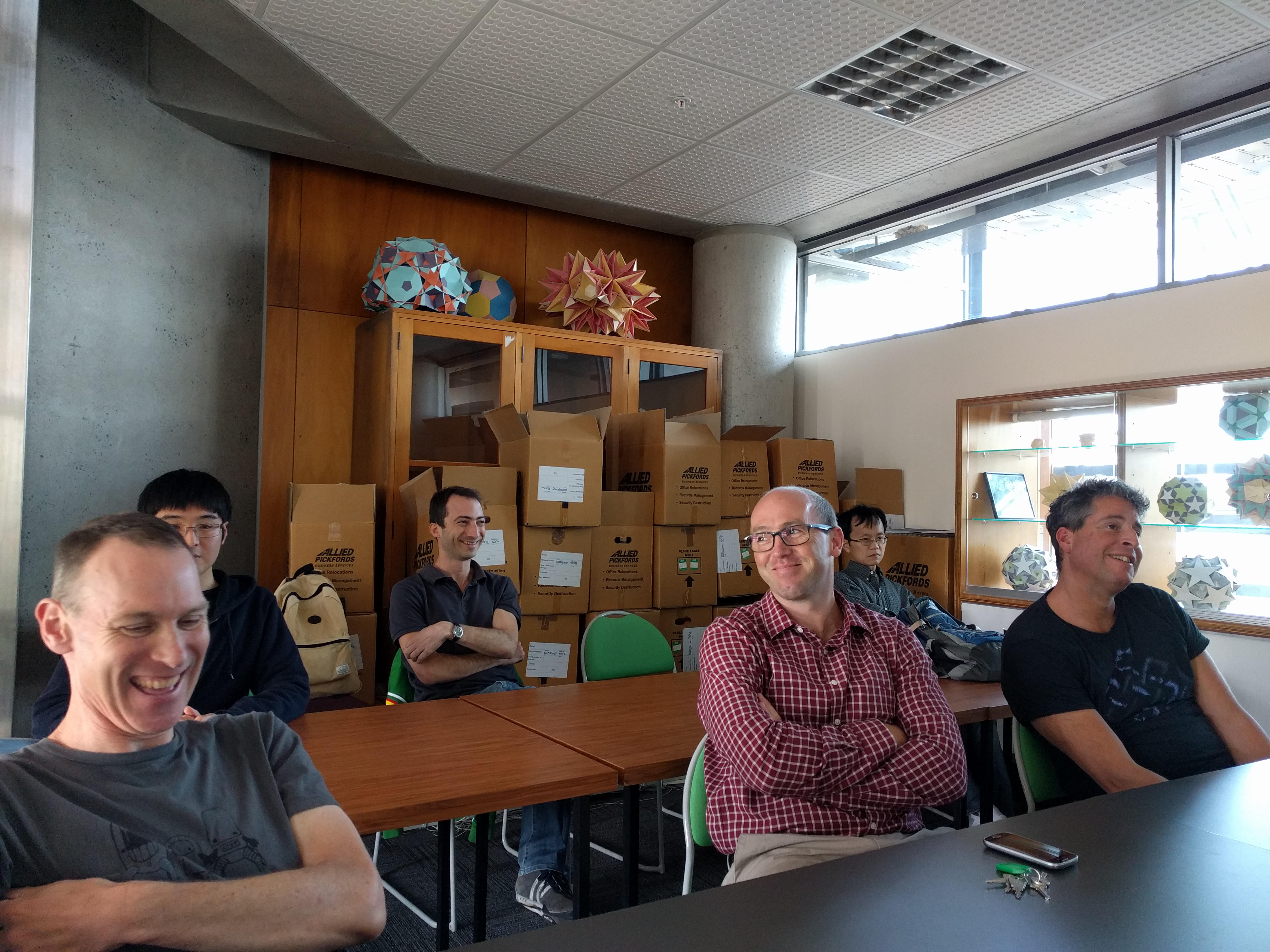| 9:30-10:20 | David Harvey |
| 10:30-11:00 | Coffee Break (Room 447) |
| 11:00-11:50 | Byoung Du Kim |
| 12:00-2:00 | Lunch Break (no catering provided) |
| 2:00-2:40 | Barak Shani |
| 2:45-3:25 | Yan Bo Ti |
| 3:30-3:55 | Break (Room 447) |
| 4:00-4:50 | Problem session |
I will discuss algorithms for computing the zeta function of a variety over a finite field, focusing on methods introduced in my paper "Computing zeta functions of arithmetic schemes" (2015). The goal of this work is to obtain good asymptotic performance with respect to the prime p (the characteristic), for as wide a range of varieties as possible.
B. D. Kim (Victoria Univ. of Wellington) The rational points over cyclotomic extensions of abelian varieties defined over number fields ramified at p with non-ordinary reduction at the primes above p.
Efforts to study elliptic curves and the Galois representations attached to modular forms are often hampered by reduction types. Especially from the perspective of Iwasawa Theory, good ordinary reduction and split multiplicative reduction are comparatively easier to study, and the other reduction types (good supersingular/non-ordinary reduction, additive/potentially semistable reduction, etc.) are considered much harder. The model that everyone wants to follow is Barry Mazur's ``Rational Points of Abelian Varieties with Values in Towers of Number Fields'', Inventiones math. 18, 183--266 (1972). With his work, when p is good ordinary or multiplicative, we can precisely express the relation between the characteristic ideal of the p-adic Selmer groups of elliptic curves or modular forms, and their p-adic L-functions. In particular, if the p-adic L-functions are not 0, then we know that the rational points over Q(μp∞) of elliptic curves or abelian varieties attached to newforms have a finite rank. Various attempts have been made to crack the case of the good supersingular/non-ordinary reduction case. Time permitting, I will discuss my construction of ±/±-Selmer groups over Zp2-extensions of imaginary quadratic fields (``Signed-Selmer Groups over the Zp2-extension of an Imaginary Quadratic Field'', Canad. J. Math. 66(2014), 826--843), and multi-variable p-adic L-functions of elliptic curves over imaginary quadratic fields (``Two-variable p-adic L-functions of modular forms for non-ordinary primes'', Journal of Number Theory Volume 144, November 2014, Pages 188--218), which were much further generalized by Loeffler, and resulted in the ±/±-p-adic L-functions (``P-adic integration on ray class groups and non-ordinary p-adic L-functions'', Proceedings of the Conference Iwasawa, 2012). But, the most important theme of this presentation is my work on the rational points of elliptic curves and abelian varieties over Zp-extensions of a number field when the elliptic curves or abelian varieties have good supersingular/non-ordinary reduction at p. Here, the biggest difference between my work and the predecessors' work is that I do not assume that the primes of the number field above p are unramified. First, I show a weak bound for the ranks of rational points by building up an Iwasawa Theory for non-ordinary primes, and second, I establish a stronger Iwasawa Theory for elliptic curves under certain conditions, and show a finite bound for ranks.
Barak Shani (Auckland) On Sets of Large Fourier Transform Under Changes in Domain
The structure arising from large values of the Fourier transform has led in recent years to results in different areas of mathematics, such as additive number theory, combinatorial number theory and cryptography. The quantum algorithm for period finding given by Shor is an application that exploits this structure. It is based on the observation that the size of the Fourier transforms of periodic functions is preserved, in some context, when the domain of the function is extended. My recent work with Joel Laity studies what other functions preserve the size of their Fourier coefficients when the size of their domain is changed. In this talk I will present our results and provide two applications of them.
Yan Bo Ti (Auckland) Supersingular isogenies and quaternion algebras
The supersingular isogeny problem is to find an isogeny between two supersingular elliptic curves. This talk would look at the link between supersingular elliptic curves and the maximal orders of quaternion algebras and translate the supersingular isogeny problem into the quaternion world. In doing so, we will show that the security of the Jao--De Feo cryptosystem is dependent on the difficult of computing the endomorphism ring of a supersingular elliptic curve.

